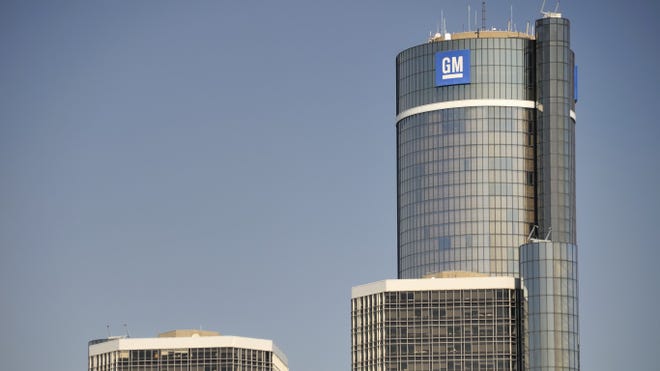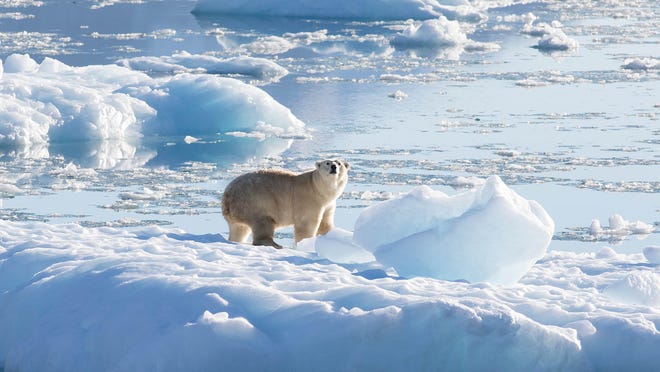- More than 30,000 people will begin meeting at the United Nations’ climate change conference in Egypt beginning Sunday.
- The yearly gathering has been going on for decades, but the bad news about climate change keeps coming.
- While more work needs to be done, experts say much has happened and there’s reason for hope.
Think of it like this: You’re on an enormous ocean liner in the middle of the sea. It’s headed towards a horrific storm and needs to turn as fast as possible to save the ship and the passengers from the worst of the tempest.
Like that ship, Earth is heading into a massive climate crisis. But our boat takes decades to turn and has a crew of billions. Complicating things further, instead of a single captain, it has close to 200 leaders — and they don’t always see eye-to-eye.
Those leaders represent countries that have agreed to a somewhat toothless treaty, which says they’ll lower their greenhouse gas emissions. It’s the closest the globe has come to finding an idea that will correct the course of the ship we’re all on.
That’s essentially the task of the more than 30,000 people meeting at the United Nations’ climate change conference in Egypt beginning Sunday. Called COP27, the 13-day conference brings together diplomats, scientists, activists, lobbyists, environmental groups and businesses to work out the details.
What is COP27?:Greta Thunberg won’t be at this massive climate change summit, but Biden will be. What to know about COP27.
This all goes back to 1992
A tiny bit of history: Back in 1992 at the Earth Summit in Brazil, 154 countries signed the Framework Convention on Climate Change. Several years later in Berlin, the countries agreed to meet yearly to negotiate binding targets to mitigate global warming.
Back then, carbon dioxide levels were only at 360 parts per million – they’re at 419 today – up from the pre-Industrial Revolution level of 280. But even so, scientists and governments realized those greenhouse gases were heating up the planet and would have potentially horrific consequences if something wasn’t done.
Ever since then, the “Conference of the Parties” has been meeting annually to work on lowering greenhouse gas emissions. It’s called that because it’s a conference of the parties that signed the agreement.
All COPs, including this one, are big, complex meetings full of wonky discussions, diplomat-speak and arguments over wording. But they’re also a critical part of a massive, global effort to shift the world from its path away from a global warming apocalypse to something better.
WATCH:Changing climate threatens native land, people
FARMING:Can growers adapt to the changing climate?
Important work has been done at the previous COPs, including in Kyoto in 1997 when industrialized countries adopted goals for emission targets. In Durban, South Africa in 2011 countries including the United States, China and India agreed to start reducing emissions. In the Paris COP in 2015, almost 200 countries signed a deal setting ambitious goals to limit temperature rise and hold governments to account to get to those targets.
That work is already beginning to bear fruit, say experts.
There’s more hope than you might think: Our troubled ship has begun changing course
There’s certainly bad news, but there’s also a lot more good news about climate change than many people realize.
China and India, the two largest nations in the world, are rapidly shifting to renewable energy. Electric cars have already reached what many believe is a tipping point in terms of adoption. A crucial election in Brazil recently went to a leader who’s vowed to save the Amazon.
“Defeatists are unaware of what’s happening,” said Bruce Usher, a professor of climate and business at Columbia University. “In many countries emissions are dropping and in some countries dropping at a fairly significant rate. Here in the United States, greenhouse gas emissions peaked in 2007.”
Make no mistake about it, there really is a horrific storm ahead and the consequences are dire. Yes, the ship is turning away from the worst of the tempest. But to avoid serious damage to the ship and many deaths among the crew, it needs to turn a lot sharper and a lot faster.
A report issued by the United Nations in late October found that the window for making the turn is closing. The world must cut emissions by 45% to avoid global catastrophe.
While experts acknowledge the world’s “climate ship” is still heading into the storm, they’re also quick to say it’s well into the turn and seems likely to skirt the absolute worst – though by no means all – of the storm.
“The reasons to be optimistic are many,” said Fred Krupp, president of Environmental Defense Fund, a U.S.-based nonprofit environmental advocacy group.
But it’s true, as the United Nations Secretary-General said in September: targets set years ago have not been met and efforts to keep the rise of global temperature rise below 1.5 degrees Celsius are “on life support.“
While more work needs to be done, much has happened since 1992.
Now is a critical time for navigating Earth’s future
Today, China — now the world’s largest emitter of greenhouse gasses — is aggressively investing in clean energy.
India is expected to overtake China as the world’s most populous country next year and gets more than 75% of its electricity from coal.
It’s now in the midst of what the International Energy Agency calls a “stunning” energy transformation, recently approving a plan to get half of its electricity from non-fossil fuel sources by 2030. Today, renewable energy is growing at a faster rate in India than in any other major economy.
The United States in August passed the largest climate bill in the nation’s history, one that will significantly impact not just US energy production but the world’s.
That means that renewable energy, which is already at scale and competitive with other sources of power, will continue to grow rapidly and get even cheaper.
“Whether or not you believe in climate change, everybody loves cheap power,” said Usher, who’s attended multiple COPs over the years.
In a report last month, Credit Suisse said Inflation Reduction Act investment in clean energy as well as in research and development means the United States is “poised to become the world’s leading energy provider.”
In just seven years, US wind and solar power could be the cheapest in the world, giving US industry and manufacturing a boost, the global investment bank said. The IRA “could turn the US from an importer of solar modules and wind turbines to an exporter.”
There was also positive climate change news in Brazil, where the outcome of the country’s presidential election could mean a reprieve for the Amazon rainforest.
Known as “the lungs of the planet,” the Amazon is critical to fighting climate change because it contains around 123 billion tons of carbon above and below ground, according to the U.S. National Oceanic and Atmospheric Administration.
Deforestation reached record levels during current president Jair Bolsonaro’s tenure. Incoming president Luiz Inácio Lula da Silva campaigned in part on protecting the rainforest.
Finally, the global shift to electric cars is well underway. In the third quarter of this year they represented 5.6% of all new US car sales, according to Kelley Blue Book. Electric and plug-in hybrid vehicles are 24% of new cars sold in China.
![As politicians jockey for the limelight at the upcoming COP27 United Nations climate summit in Egypt, regulators and corporate lawyers are gearing up for the biggest climate battle of 2023 -- Scope 3 emissions. The technical name for indirect emissions a company gets from its supply chain vendors -- which can often be a vast […]](https://www.gannett-cdn.com/media/2022/11/01/USATODAY/usatsports/247WallSt.com-247WS-1179022-imageForEntry8-26.jpg?width=660&height=372&fit=crop&format=pjpg&auto=webp)
Some are angry more isn’t being done
Meanwhile, with every passing mile many people see more dark, roiling storm clouds of climate change — and they are worried and angry that more isn’t being done.
Scientists, activists and tens of millions of people bearing the brunt of climate-strengthened catastrophes are clamoring for faster and more urgent efforts.
From Florida’s hurricane-damaged Gulf coast to the West’s drought- and fire-stricken lands; in flooded Pakistan; cyclone-devastated parts of Africa; and brushfire-scorched Australia — much of humanity is already living with the consequences of climate change. And it’s destroying lives, communities and livelihoods.
To turn Earth’s course more quickly means realizing there is hope. All that’s lacking to get there is the political will to make changes that might hurt the finances of some in the short term but will quickly result in a cleaner, healthier and richer world, say experts.
The world is already on the path to decarbonization and isn’t starting from zero, said Usher.
Catastrophe, he said, is by no means inevitable.
“It’s absolutely not hopeless. There’s a very clear path to keeping temperature rise below 2 degrees Celsius, it’s absolutely feasible. We have the technology and we have the investment. What we’re lacking is the will.”





